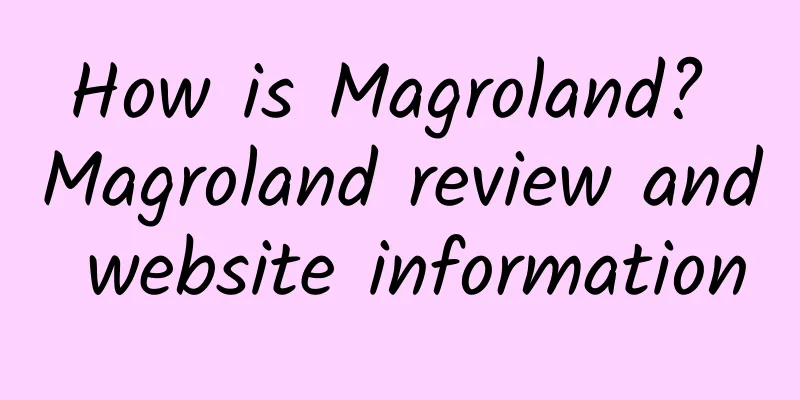What is the Royal Danish Library like? Reviews and website information of the Royal Danish Library

|
What is the website of the Royal Danish Library? The Royal Danish Library (Det Kongelige Bibliotek) is the national library of Denmark. It was established in 1648. It is also the library of the University of Copenhagen and the largest library in Northern Europe. Website: www.kb.dk The Royal Danish Library (Det Kongelige Bibliotek) is the national library of Denmark and one of the largest libraries in Northern Europe. It is not only a symbol of Danish culture, but also an important resource for global academic research. Since its establishment in 1648, the Royal Danish Library has undergone hundreds of years of development and change, gradually becoming a modern library integrating history, culture, art and technology. This article will explore the history, architectural features, collection resources, digital development and important position of the Royal Danish Library in Danish culture. 1. Historical Background of the Royal Danish LibraryThe history of the Royal Danish Library can be traced back to 1648, when King Frederik III of Denmark ordered the establishment of a royal library to house precious documents of the royal family and the country. Initially, the library's collections mainly came from the royal family's private collections, including manuscripts, books and maps. Over time, the library gradually expanded its collections and became one of the most important cultural and academic institutions in Denmark. In the 18th century, the Royal Danish Library began to open to the public, providing valuable learning and research resources for scholars and researchers. In the 19th century, the library established a close cooperative relationship with the University of Copenhagen and became a subsidiary library of the university. This cooperation not only enriched the library's collection, but also enhanced its status in the academic community. Since the 20th century, the Royal Danish Library has undergone several expansions and modernizations. In particular, in 1999, the library added a modern building, The Black Diamond, which became one of Copenhagen's landmark buildings. The design of the Black Diamond combines traditional and modern elements, symbolizing the library's mission and vision in the new era. 2. Architectural Features of the Royal Danish LibraryThe Royal Danish Library has a unique architectural style, reflecting the high achievements of Danish architectural art. The main building of the library is divided into two parts: the old building and the new building. The old building was built in the 19th century in a neoclassical style, with a solemn exterior and exquisite interior decoration, full of historical atmosphere. The main function of the old building is to collect and display precious historical documents and manuscripts. The new building, the Black Diamond, is the landmark of the Royal Danish Library. Designed by the famous Danish architectural firm Schmidt Hammer Lassen, the Black Diamond was officially opened to the public in 1999. The name Black Diamond comes from its appearance - the black glass curtain wall sparkles in the sun, like a huge black diamond. The interior design of the building is modern, and the spacious and bright space provides readers with a comfortable reading environment. The Black Diamond is not only a symbol of the library, but also one of the city landmarks of Copenhagen, attracting a large number of tourists to visit. The interior design of the Black Diamond not only focuses on beauty, but also takes functionality into full consideration. The library has multiple reading rooms, meeting rooms and exhibition spaces to meet the needs of different readers. In addition, the Black Diamond also has a cafe and a shop to provide convenient services for readers. The architectural design of the Black Diamond fully reflects the multiple roles of the Royal Danish Library in modern society - not only a treasure house of knowledge, but also a place for cultural exchange. III. Collection resources of the Royal Danish LibraryThe Royal Danish Library has a rich collection of resources, covering documents and materials in various disciplines. The library's collection mainly includes the following categories:
The collection resources of the Royal Danish Library not only provide valuable learning and research materials for Danish scholars and researchers, but also make important contributions to the global academic community. The library regularly holds various exhibitions and lectures to showcase its rich collection resources to the public and promote cultural exchanges and knowledge dissemination. 4. Digital Development of the Royal Danish LibraryWith the rapid development of information technology, the Royal Danish Library has actively promoted digital construction and is committed to combining traditional library services with modern technology. Digital development has not only improved the library's service efficiency, but also expanded its influence. The Royal Danish Library's digitization projects mainly include the following aspects:
The digital development of the Royal Danish Library has not only improved its service level, but also provided important support for global academic research and cultural communication. Through digital technology, the library combines traditional cultural resources with modern technology to provide readers with more convenient and diversified services. 5. The Royal Danish Library’s Status in Danish CultureThe Royal Danish Library is not only the national library of Denmark, but also an important symbol of Danish culture. The status of libraries in Danish culture is reflected in the following aspects:
The Royal Danish Library plays an irreplaceable role in Danish culture. It is not only a treasure house of knowledge, but also an important symbol of Danish culture. The library has made important contributions to the development and dissemination of Danish culture through its rich collection resources, modern service facilities and diverse cultural activities. VI. Future Prospects of the Royal Danish LibraryWith the continuous advancement of science and technology and the changing needs of society, the Royal Danish Library will continue to strive to improve its service level and influence. In the future, the library's development direction will mainly include the following aspects:
The future development of the Royal Danish Library is full of hope. It will continue to serve as an important symbol of Danish culture and make greater contributions to global academic research and cultural communication. In short, the Royal Danish Library is a modern library that integrates history, culture, art and technology. It is not only the national library of Denmark, but also an important resource library for global academic research. Through its rich collection resources, modern service facilities and diverse cultural activities, the Royal Danish Library has made important contributions to the development and dissemination of Danish culture. In the future, the library will continue to be committed to improving its service level and influence, and make greater contributions to global academic research and cultural dissemination. |
>>: How is I Want to Study? I Want to Study Reviews and Website Information
Recommend
How is Yamaguchi University in Japan? Reviews and website information of Yamaguchi University in Japan
What is the website of Yamaguchi University in Jap...
How is Agfa-Gevaert Group? Agfa-Gevaert Group reviews and website information
What is the website of Agfa-Gevaert NV? Agfa-Gevae...
How is the Canadian Chinese Radio? Canadian Chinese Radio Reviews and Website Information
What is the website of Canadian Chinese Radio? Can...
Benefits of eating peaches for pregnant women
Pregnant women are very careful about what they e...
How is Cottds Fashion Blog? Cottds Fashion Blog Review and Website Information
What is Cottds Fashion Blog? Cottds is a personal ...
The efficacy and therapeutic value of red cabbage
Red-backed Chinese cabbage is also called angelic...
How to make crispy persimmons Tips for making crispy persimmons
Everyone must have eaten persimmons. They know th...
The efficacy and function of floating wheat and how to eat it
Every June is the season when wheat matures on a ...
Can pregnant women eat passion fruit? What are the effects and benefits of eating passion fruit for pregnant women?
Passion fruit, also known as egg fruit, is a spec...
Is Kalanchoe suitable for indoor cultivation? How to grow Kalanchoe?
Kalanchoe is a beautiful plant that can be used f...
Banana vinegar recipe
Banana vinegar is made from bananas, vinegar and ...
What is Prepare.org like? Prepare.org review and website information
What is Prepare.org? Prepare.org is the official w...
Nutrition of milk melon
Below I will introduce to you some knowledge abou...
The efficacy and function of dried longan
Dried longan is a favorite dried fruit ingredient...
Can eating watermelon reduce internal heat? Can eating watermelon reduce internal heat?
People tend to be more irritable and have a lot o...









